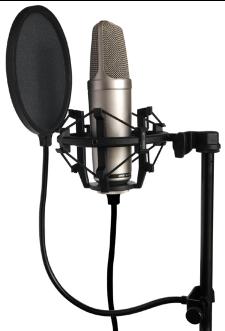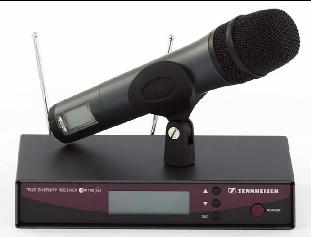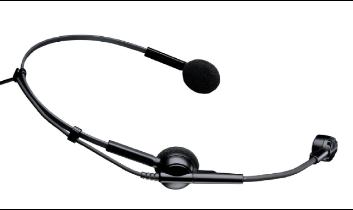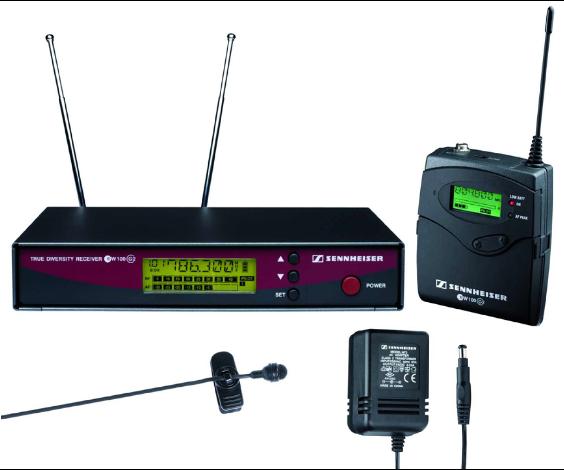"POPPING" Is caused by a sudden explosion of air hitting a mic's diaphragm especially when saying words with "P" or "B" in them. This problem is normally encountered when a vocalist is close in to the microphone. Below is an example of a recording where you can clearly hear "popping" occurring. The solution to this problem is to use a pop shield between the person & the microphone. A pop shield is a barrier that dissipates the energy in the explosive "Ps" & Bs" but still allows sound to travel through it. The pop shield itself is normally made of a fine nylon mesh or a perforated thin sheet of metal. |
||
 |
||
THE PROXIMITY EFFECT This phenomenon does not occur with omnidirectional mics. As a mic is moved closer & closer to a sound source you begin to hear an artificial boost in the lower frequencies. This has been utilised by years by vocalists to make their voices sound larger than life. Imagine any Hollywood trailer & the voice will exhibit the proximity effect in full force. In the example below you can hear the proximity effect & hear how the effect diminishes as you move further back from the microphone. |
||
WIRELESS MICROPHONES (RADIO MICS) In theatre & television radio mics are used extensively because they offer two big advantages over traditional mics. (1) There are no cables to trip over & trail across the stage. (2) They can be very small, so much so that on stage the audience can not even see that a performer is mic-ed up. Radio mics come in three types. There is the handheld radio mics, headset mics & lavalier mics. Below are pictures of all three. |
||
 |
||||
 |
||||
HEADSET MIC. (NOTE LEAD AT FAR LEFT WHICH WOULD BE PLUGGED INTO A TRANSMITTER.) |
||||
HANDHELD RADIO MIC (WITH TRANSMITTER BUILT INTO THE BODY) ON TOP OF A RECEIVER. |
||||
 |
||
RECEIVER, TRANSMITTER, LAVALIER MIC & AC ADAPTER |
||